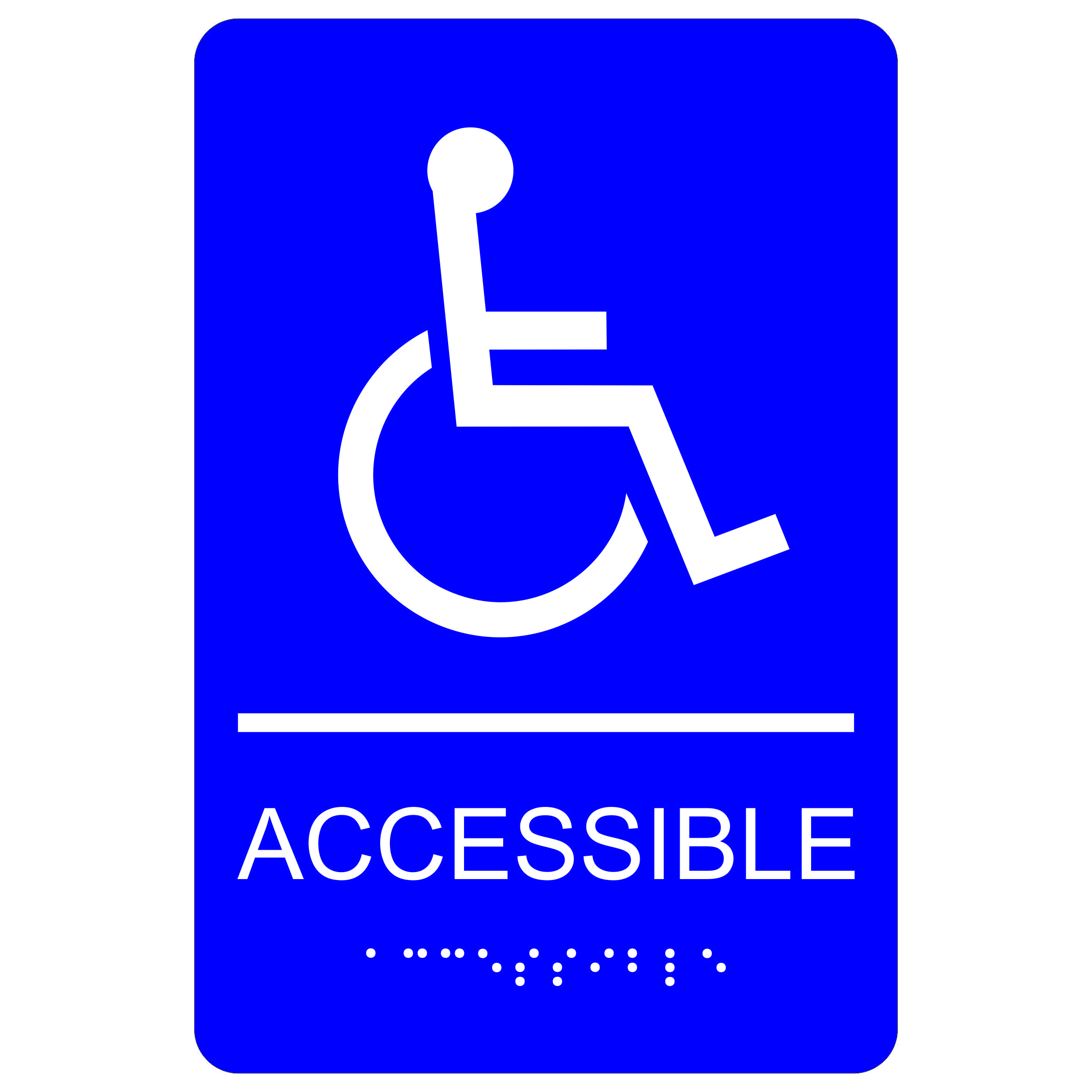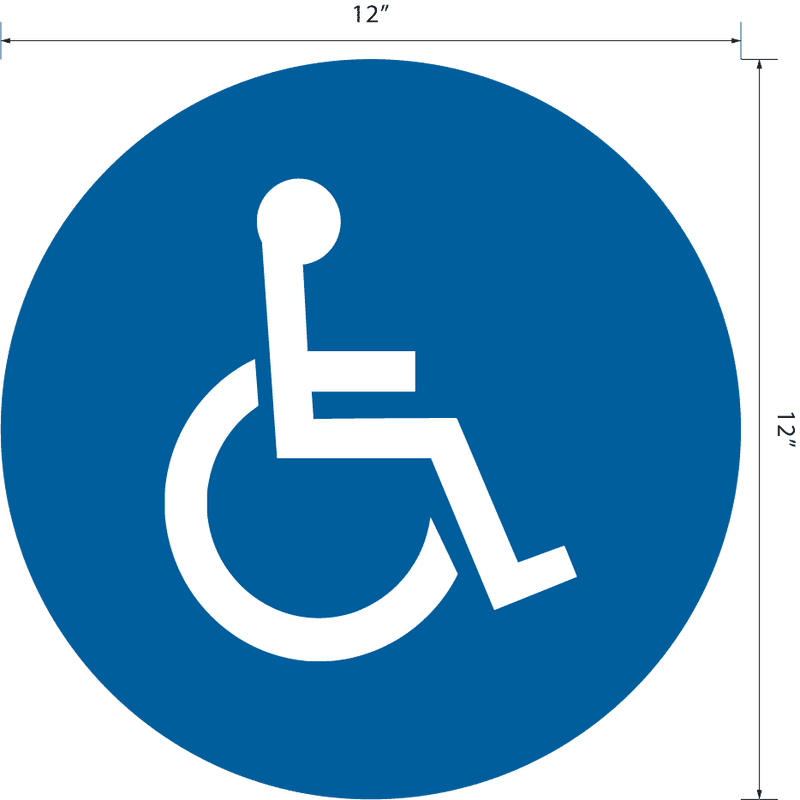ADA Signage: Ensuring Accessibility and Compliance in Public Spaces
ADA signs plays a vital duty in ensuring availability and conformity within public areas, significantly contributing to an inclusive environment for individuals with specials needs. As we explore the nuances of ADA signage, from responsive attributes to develop ins and outs, it's important to take into consideration just how these elements coalesce to promote the civil liberties of all customers.
Significance of ADA Signs
In modern-day culture, the importance of ADA signage prolongs past plain compliance with legal mandates to personify a dedication to inclusivity and access for all people. These indications are essential in developing atmospheres where individuals with disabilities can browse public rooms with the same simplicity and freedom as those without impairments. By supplying clear and standard info, ADA signage ensures that everybody can access centers, solutions, and details without obstacles.
The value of ADA signs lies in its capacity to enhance the lifestyle for individuals with specials needs by promoting equivalent accessibility. It removes the obstacles that could otherwise hinder their ability to take part fully in neighborhood life. These indicators serve as visible indicators of a company's commitment to variety and equal rights, reflecting broader social worths that champion the rights and dignity of all individuals.
Moreover, ADA signs plays a vital duty in public safety and security. By guiding individuals to departures, bathrooms, and various other vital centers, it makes sure that all individuals, no matter physical ability, can leave safely during emergencies. In recap, ADA signs is not just a governing requirement yet a powerful tool for promoting a fair and comprehensive culture.
Trick Aspects of Conformity

Positioning is essential; indications have to be installed in places that are conveniently noticeable and reachable. Normally, signs needs to be mounted between 48 and 60 inches from the ground to make sure ease of access for both standing and mobility device users. Responsive elements, such as Braille, are necessary for people with visual disabilities, providing essential details in a non-visual layout.
High-contrast shades in between the message and background are required to improve readability for individuals with low vision. The ADA mandates specific contrast proportions to ensure clarity. In addition, character size is a vital factor to consider, with minimal height needs dictated by the seeing distance to make certain readability from different angles.
Style Factors To Consider for Accessibility
Creating easily accessible signage needs a precise strategy to guarantee it satisfies the requirements of all individuals, specifically those with disabilities. The dimension of the message is equally crucial, with ADA standards advising a minimal elevation based on checking out range to guarantee legibility.
Contrasting colors between text and background are crucial for visibility, particularly for individuals with aesthetic disabilities. A high comparison proportion helps distinguish the text from its history, improving readability ADA Signs under numerous lighting conditions. In addition, tactile components, such as Braille and elevated characters, are vital for individuals that are blind or have reduced vision. These components must be situated at a constant height and position to make sure very easy access and understanding.
Moreover, the positioning of signs plays a considerable duty in accessibility. Signs should be installed in areas that are unhampered and conveniently reachable. Ensuring that signs is installed at suitable elevations and angles allows all users, including those making use of mobility devices, to interact with them successfully.
Typical Errors to Prevent

One more widespread mistake is the wrong placement of signage. ADA standards specify accurate elevation and location demands to make sure that indicators are obtainable and quickly noticeable by all people, consisting of those utilizing mobility devices. Overlooking these guidelines not only hinders access however additionally runs the risk of non-compliance with lawful requirements.
Furthermore, inadequate comparison between text and history is a constant oversight. Ample contrast is necessary for readability, especially for individuals with low vision. Designers sometimes choose shades that are visually attractive however do not have the required contrast, making the text difficult to recognize.
Lastly, some designers fall short to include tactile components, such as Braille, which are critical for individuals who are blind. Omitting these features not just causes non-compliance with ADA guidelines but additionally restricts accessibility for a segment of the population that counts on responsive information.
Future Trends in Signage
Improvements in innovation and boosting awareness of inclusivity are forming the future patterns in signage design. Digital signage, for circumstances, is progressing to include interactive attributes and real-time updates, which can be crucial in supplying vibrant details in public spaces.
One more emerging pattern is the usage of enhanced fact (AR) to boost user experience. AR-enabled signs can overlay electronic details onto the physical environment, providing see page aesthetically damaged people with auditory or haptic comments. ADA Signs. This innovation not just improves availability yet also creates an engaging experience for all users
Sustainability is additionally a substantial element affecting signs patterns. Eco-friendly products and energy-efficient lighting remedies are being focused on to align with worldwide ecological objectives. Moreover, advancements in products scientific research are leading to the growth of more sturdy and weather-resistant indications.
Verdict
ADA signage plays an essential function in assuring access and conformity within public rooms by integrating tactile components, high-contrast shades, and calculated positioning. The adherence to ADA standards not only helps with secure navigating for people with disabilities yet additionally signifies an organization's devotion to diversity and inclusivity. By staying clear of typical errors and accepting future patterns, public rooms can proceed to progress these worths, guaranteeing that the civil liberties and self-respect of all people are appreciated and supported.
ADA signage plays a vital duty in ensuring accessibility and compliance within public rooms, considerably contributing to an inclusive setting for people with disabilities. As we explore the subtleties of ADA signs, from tactile functions to make details, it's crucial to think about just how these components integrate to promote the legal rights of all customers.In modern-day society, the value of ADA signage extends past plain compliance with lawful mandates to embody a dedication to inclusivity and availability for all click here for more info people. By offering clear and standardized info, ADA signs makes sure that every person can access centers, solutions, and info without obstacles.
ADA signage plays an essential role in ensuring accessibility and conformity within public areas by including responsive components, high-contrast colors, and strategic placement. (ADA Signs)